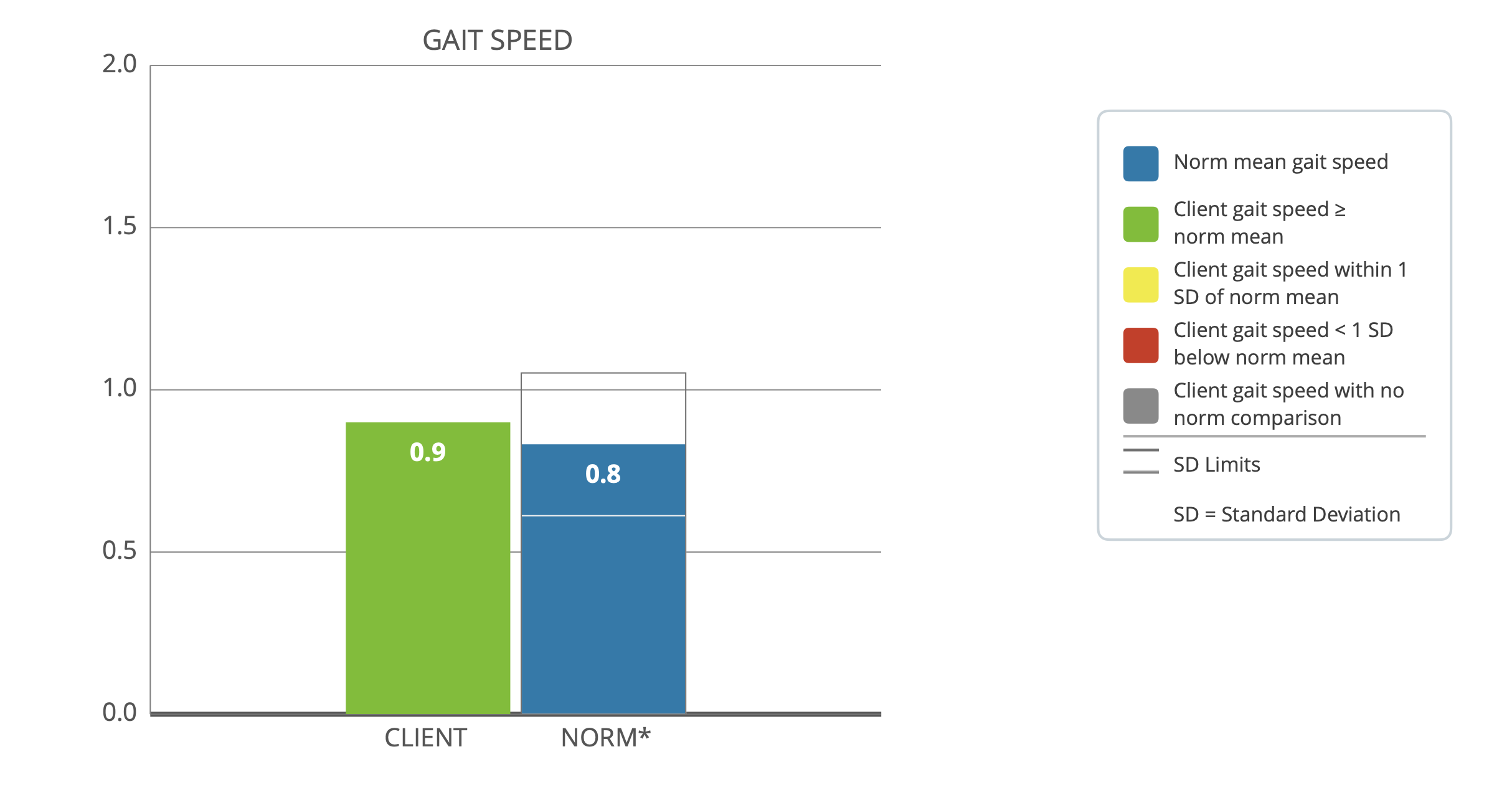
SenSen’s Outputs, Sensor, & Data
SenSen was carefully designed and developed using evidence-based tests with hardware that was validated and reliable according to third party studies. See how SenSen was built to be the best choice for balance and mobility assessment tool on the market.
How SenSen Calculates Scores
To calculate Instability Scores for the mCTSIB and 4SBT, SenSen uses accelerometer data measured at the pelvis. This method has been proven as a reliable alternative to Center of Pressure (COP) data collected with force plate based assessment tools. According to a study from Gait & Posture, “Acceleration measured at the pelvis and center of pressure were found to be well correlated across the SOT conditions. Additionally, test-retest reliabilities of the ACC measures were as good or better than the COP in almost every SOT condition; this includes peak-to-peak, which is currently used in CDP.”
The Instability Score is the mean Normalized Path Length from the medial & lateral (x-axis) readings and the anterior & posterior (z-axis) readings from the IMU sensor.
In a study authored by Fay Horak, Overall, it is demonstrated that body-worn sensors provide valid and valuable measures of balance and gait, offering advantages over traditional methods in terms of objectivity, sensitivity, and immediate feedback.
S.L. Whitney, J.L. Roche, G.F. Marchetti, C.-C. Lin, D.P. Steed, G.R. Furman, M.C. Musolino, and M.S. Redfern (2011). “A comparison of accelerometry and center of pressure measures during computerized dynamic posturography: A measure of balance.” Gait & Posture 33(4): 594-599.
Horak FB. Postural orientation and equilibrium: what do we need to know about neural control of balance to prevent falls? Age Ageing. 2006 Sep;35 Suppl 2:ii7-ii11. doi: 10.1093/ageing/afl077. PMID: 16926210.
Reliability of the Sensor
SenSen uses a third-party wireless inertial measurement unit (IMU) to collect raw motion data, all of which is processed using our proprietary algorithms to quantify instability and show a client’s movement around a central point.
We chose to use an IMU sensor produced by Mbientlab called MetaMotionRL (MMR). This IMU’s sensors include an accelerometer, gyroscope, and magnetometer. It was chosen because of its reliability in collecting raw movement data, BluetoothTM Low Energy wireless data transfer, cost effectiveness, small form factor, and rechargeable battery.
The MMR IMU has been independently studied and validated for reliability in studies, including Sensors, a leading International, peer-reviewed journal on the science and technology of sensors. It has also performed consistently in our own internal testing, which were specific to the assessments that it uses within SenSen.
Zhou, Lin; Fischer, Eric; Tunca, Can; Brahms, Clemens Markus; Ersoy, Cem; Granacher, Urs; and Arnica, Bert; (2020). “How we found our IMU: Guidelines to IMU Selection and a comparison of seven IMUs for pervasive healthcare applications.” Sensors.
Being, Kristen (2019). “Validation of wearable sensor performance and placement for the evaluation of spine movement quality.” School of Human Kinetics, University of Ottawa.
Assessments SenSen Uses
SenSen offers 5 evidence-based tests that are commonly used throughout the PT and rehab practices, and allow users to effectively test balance, functional mobility, strength and gait:
mCTSIB uses 4 different conditions that highlight the body’s balance centers
4 Stage Balance Test thoroughly assesses static balance
30-second Chair Stand assesses leg strength and endurance
Timed Up and Go assesses functional mobility and gait.
Gait Test assesses gait and looks at gait speed, step count, and stride length.
Jones, C., Rikli, R., et al. (1999). "A 30-s chair-stand test as a measure of lower body strength in community-residing older adults." Research Quarterly for Exercise and Sport 70(2): 113.
Steffen, T. M., Hacker, T. A., et al. (2002). "Age- and gender-related test performance in community-dwelling elderly people: Six-Minute Walk Test, Berg Balance Scale, Timed Up & Go Test, and gait speeds." Physical Therapy 82(2): 128-137.
Montero-Odasso, M., Schapira, M., Soriano, E. R., Varela, M., Kaplan, R., Camera, L. A., Mayorga, L. M. (2005). Gait velocity as a single predictor of adverse events in healthy seniors aged 75 years and older.
Reports We Produce & Normed Data
SenSen produced a variety of reports from comprehensive client test history to single-test, high-detail reports. These reports are available as PDFs that are ready to use for reimbursements and billing and can also be generated as .CSV files for quick and easy transfer to an EHR system.
Each single-test report includes normed data to inform the outputs of each of SenSen’s tests, and custom outputs from SenSen’s history log can highlight changes over time to support continued treatments and patient progress.
SenSen is currently building a database with SenSen specific test outputs, which will allow users to compare client performance to a group of their peers right in the app
More information on our normed data and cutoff scores can be found on our Research page.
Intake Forms
SenSen includes intake forms designed to help a clinician collect valuable information on a client using an evidence-based intake form. Accessed on the CLIENT screen, users have the option to administer the Activities-specific Balance Confidence (ABC) scale and the Dizziness Handicap Inventory (DHI) form; both peer-reviewed tools.
